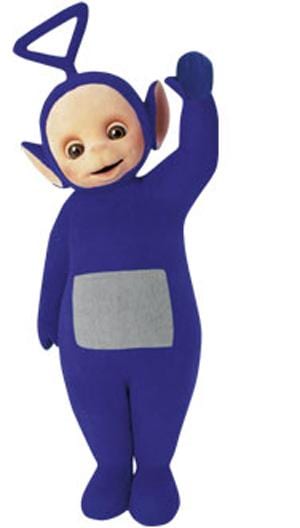Last summer, an online petition circulated calling on Sesame Street producers to have Bert and Ernie marry. The sexualities of the two puppets have long been the stuff of rumour, especially among hopeful gay men. There are a few things about Bert and Ernie that ping the ‘dar: their constant companionship, shared bedroom and framed portrait of them together. In 2010, the whispers grew even louder when Bert tweeted that his haircut resembled Mr T’s: “The only difference is mine is a little more ‘mo, a little less ‘hawk.”
The stated goal for the marry-Bert-and-Ernie movement was to give queer kids constructive role models in the hopes of lowering their bullying and suicide risks. During the past six months, the petition has collected about 11,000 signatures, plus an additional 1,500 on a related petition calling on Sesame Street producers to out Bert and Ernie as gay.
The only problem is that Bert and Ernie aren’t gay. Sesame Workshop has repeatedly pointed out over the years, “Bert and Ernie are best friends. They were created to teach preschoolers that people can be good friends with those who are very different from themselves. Even though they are identified as male characters and possess many human traits and characteristics . . . they remain puppets, and do not have a sexual orientation.”
I can certainly see how constructive it would be if Bert and Ernie came out and married each other. Just as it would be constructive if Stephen Harper and Pope Benedict XVI came out and married each other. But no amount of hoping will make it so.
On the other hand, when characters are fictional, much about their lives is idealized in the minds of their fans. So if gay men enjoy fantasizing that a celebrity is gay when he’s not, what’s the harm? There may even be no harm in forming gay fan clubs and staging high-profile fake gay weddings.
I say there “may” be no harm in such public fantasies because there have been instances where gay fandom has been widely reported, then used in negative ways. In 2002, the media reported that gay men were devoted viewers of SpongeBob SquarePants, who lives in a pineapple under the sea and has a best friend named Patrick Starfish. Three years later, when SpongeBob appeared in a classroom video promoting tolerance and diversity, the ultra-conservative Christian group Focus on the Family accused SpongeBob of being gay and promoting a pro-homosexual message. SpongeBob’s creator denied the accusations.
In 1999, Jerry Falwell denounced one of the Teletubbies characters, Tinky Winky, as a bad role model for children because he/she is gay. Falwell jumped to a conclusion about Winky’s sexuality based on the show’s sizable gay audience, Winky’s purple complexion (a gay colour), her/his triangle-shaped antenna (a gay symbol), and his/her purse (gay, gay, gay!). BBC, the show’s producer, denied that Tinky Winky is gay.
When the queer community sees gays where they’re not, aren’t we encouraging others to also speculate on sexual orientation based on superficial traits? When lesbians playfully and publicly speculate that Peanuts’ Peppermint Patty is a dyke – after all, she’s kind of a tomboy, coaches baseball, doesn’t wear dresses, keeps her candy cigarettes in her sleeve and is called “sir” by a female friend – the inadvertent result could be that Peanuts gets dropped from conservative newspapers.
It’s possible that by sharing our lighthearted fantasies with the world, we end up reinforcing stereotypes and giving rednecks and religionistas new targets. Once we’ve unwittingly outed new “homosexuals,” it doesn’t take long for them to be attacked.
To be on the safe side, I think I’ll keep my fantasies about Stephen Harper and Pope Benedict’s relationship to myself. I’d hate to put either of them at risk of being attacked by some rightwing political or religious nutcase.

 Why you can trust Xtra
Why you can trust Xtra


